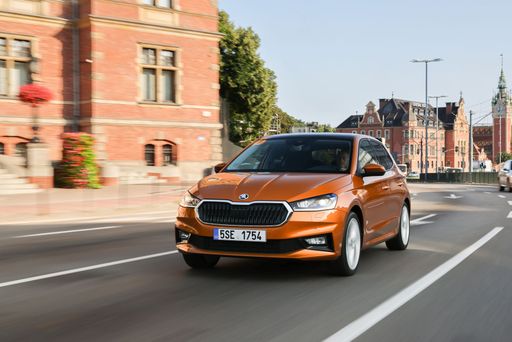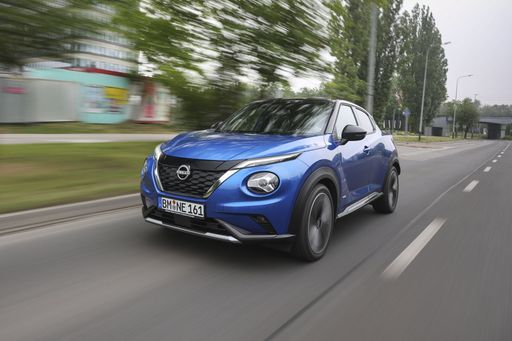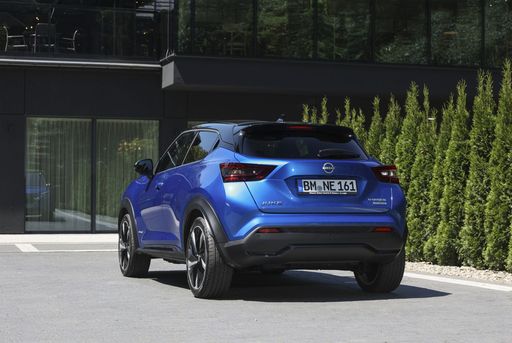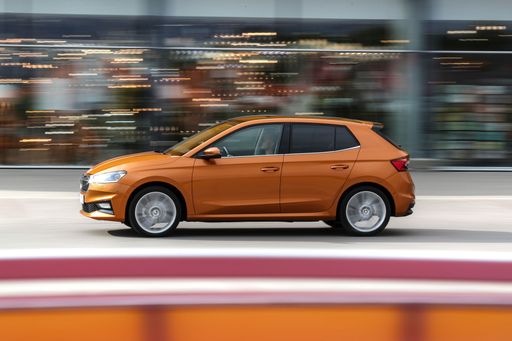Nissan Juke vs Skoda Fabia – Differences & prices compared
Everyday use, family trips or long-distance drives – here’s where the differences show.
Discover whether Nissan Juke or Skoda Fabia fits your lifestyle better.
Costs and Efficiency:
Looking at overall running costs, both models reveal some interesting differences in everyday economy.
Skoda Fabia has a clearly perceptible advantage in terms of price – it starts at 16900 £, while the Nissan Juke costs 21400 £. That’s a price difference of around 4508 £.
Fuel consumption also shows a difference: Nissan Juke manages with 4.70 L and is therefore hardly perceptible more efficient than the Skoda Fabia with 4.90 L. The difference is about 0.20 L per 100 km.
Engine and Performance:
Power, torque and acceleration say a lot about how a car feels on the road. This is where you see which model delivers more driving dynamics.
When it comes to engine power, the Skoda Fabia has a somewhat edge – offering 177 HP compared to 143 HP. That’s roughly 34 HP more horsepower.
In acceleration from 0 to 100 km/h, the Skoda Fabia is distinct quicker – completing the sprint in 7.40 s, while the Nissan Juke takes 10.10 s. That’s about 2.70 s faster.
In terms of top speed, the Skoda Fabia performs evident better – reaching 228 km/h, while the Nissan Juke tops out at 180 km/h. The difference is around 48 km/h.
There’s also a difference in torque: Skoda Fabia pulls a bit stronger with 250 Nm compared to 200 Nm. That’s about 50 Nm difference.
Space and Everyday Use:
Whether family car or daily driver – which one offers more room, flexibility and comfort?
Both vehicles offer seating for 5 people.
In curb weight, Skoda Fabia is to a small extent lighter – 1143 kg compared to 1274 kg. The difference is around 131 kg.
In terms of boot space, the Nissan Juke offers minimal more room – 422 L compared to 380 L. That’s a difference of about 42 L.
In maximum load capacity, the Nissan Juke performs minimal better – up to 1305 L, which is about 115 L more than the Skoda Fabia.
When it comes to payload, Skoda Fabia slight takes the win – 437 kg compared to 427 kg. That’s a difference of about 10 kg.
Who wins the race?
The Skoda Fabia proves to be leaves the rival little chance and therefore becomes our DriveDuel Champion!
Skoda Fabia is the better all-rounder in this comparison.
 @ Škoda Auto a.s. / Škoda Storyboard
@ Škoda Auto a.s. / Škoda Storyboard
Skoda Fabia
Nissan Juke
The Nissan Juke is a pocket-sized crossover that refuses to blend in, with quirky styling and a cheeky stance that turns heads at every traffic light. It’s ideal for shoppers who value personality and nimble urban driving over maximum practicality, delivering surprising pep and a well-equipped feel for everyday fun.
details @ Nissan Motor Corporation
@ Nissan Motor Corporation
 @ Nissan Motor Corporation
@ Nissan Motor Corporation
 @ Nissan Motor Corporation
@ Nissan Motor Corporation
 @ Nissan Motor Corporation
@ Nissan Motor Corporation
Skoda Fabia
The Skoda Fabia is a clever, no-nonsense small car that turns everyday chores into a breeze thanks to smart packaging and a surprisingly roomy cabin. It won’t set your pulses racing, but it’s a consistently sensible choice — reliable, easy to live with and blessed with a few neat tricks that make city life less faff.
details @ Škoda Auto a.s. / Škoda Storyboard
@ Škoda Auto a.s. / Škoda Storyboard
 @ Škoda Auto a.s. / Škoda Storyboard
@ Škoda Auto a.s. / Škoda Storyboard
 @ Škoda Auto a.s. / Škoda Storyboard
@ Škoda Auto a.s. / Škoda Storyboard
 @ Škoda Auto a.s. / Škoda Storyboard
@ Škoda Auto a.s. / Škoda Storyboard
 @ Škoda Auto a.s. / Škoda Storyboard
@ Škoda Auto a.s. / Škoda Storyboard
 @ Nissan Motor Corporation
@ Nissan Motor Corporation
|
 @ Škoda Auto a.s. / Škoda Storyboard
@ Škoda Auto a.s. / Škoda Storyboard
|
|
|
|
Costs and Consumption |
|
|---|---|
|
Price
21400 - 30100 £
|
Price
16900 - 30500 £
|
|
Consumption L/100km
4.7 - 6 L
|
Consumption L/100km
4.9 - 5.6 L
|
|
Consumption kWh/100km
-
|
Consumption kWh/100km
-
|
|
Electric Range
-
|
Electric Range
-
|
|
Battery Capacity
0.60 kWh
|
Battery Capacity
-
|
|
co2
107 - 136 g/km
|
co2
112 - 126 g/km
|
|
Fuel tank capacity
46 L
|
Fuel tank capacity
40 L
|
Dimensions and Body |
|
|---|---|
|
Body Type
SUV
|
Body Type
Hatchback
|
|
Seats
5
|
Seats
5
|
|
Doors
5
|
Doors
5
|
|
Curb weight
1274 - 1405 kg
|
Curb weight
1143 - 1278 kg
|
|
Trunk capacity
354 - 422 L
|
Trunk capacity
380 L
|
|
Length
4210 mm
|
Length
4108 - 4137 mm
|
|
Width
1800 mm
|
Width
1780 mm
|
|
Height
1593 mm
|
Height
1458 - 1461 mm
|
|
Max trunk capacity
1237 - 1305 L
|
Max trunk capacity
1190 L
|
|
Payload
405 - 427 kg
|
Payload
402 - 437 kg
|
Engine and Performance |
|
|---|---|
|
Engine Type
Petrol, Full Hybrid
|
Engine Type
Petrol
|
|
Transmission
Manuel, Automatic
|
Transmission
Manuel, Automatic
|
|
Transmission Detail
Manual Gearbox, Dual-Clutch Automatic, Automatic Gearbox
|
Transmission Detail
Manual Gearbox, Dual-Clutch Automatic
|
|
Drive Type
Front-Wheel Drive
|
Drive Type
Front-Wheel Drive
|
|
Power HP
114 - 143 HP
|
Power HP
80 - 177 HP
|
|
Acceleration 0-100km/h
10.1 - 11.8 s
|
Acceleration 0-100km/h
7.4 - 15.7 s
|
|
Max Speed
166 - 180 km/h
|
Max Speed
175 - 228 km/h
|
|
Torque
200 Nm
|
Torque
93 - 250 Nm
|
|
Number of Cylinders
3 - 4
|
Number of Cylinders
3 - 4
|
|
Power kW
84 - 105 kW
|
Power kW
59 - 130 kW
|
|
Engine capacity
999 - 1598 cm3
|
Engine capacity
999 - 1498 cm3
|
General |
|
|---|---|
|
Model Year
2024
|
Model Year
2025
|
|
CO2 Efficiency Class
D, E, C
|
CO2 Efficiency Class
D, C
|
|
Brand
Nissan
|
Brand
Skoda
|
What drive types are available for the Nissan Juke?
Available configurations include Front-Wheel Drive.
The prices and data displayed are estimates based on German list prices and may vary by country. This information is not legally binding.
